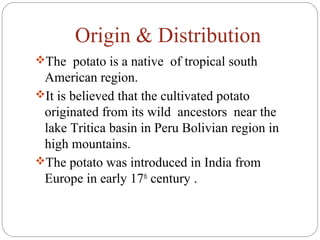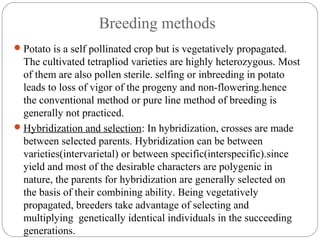The document discusses potato breeding, including the origin, botany, genetics, and breeding methods of potato. It provides details on several commercial potato varieties grown in India and their characteristics. The document also covers topics like biotechnology, future prospects, and the development of true potato seeds.


























